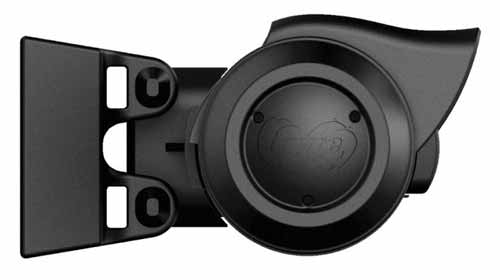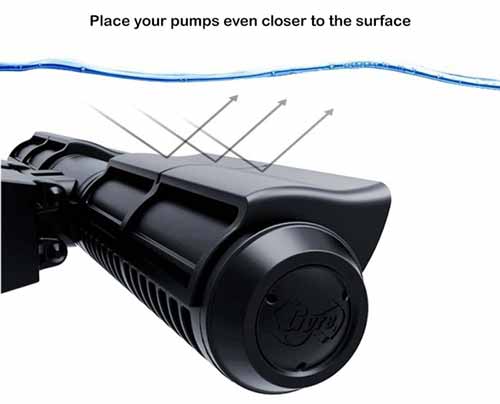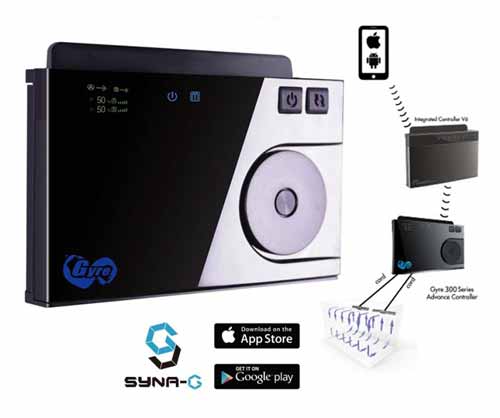Water flow is one of the most important things for any saltwater aquarium. Proper flow has numerous benefits for your tank’s health and inhabitants but how do you determine what is the right water flow for you? Part of the initial confusion is that there is no one flow fits all solution. You will need to do a little bit of research and choose the type and parameters that match your tank and personality the best.
Different Types Of Pumps For Reef Tank Flow
Why do you need water flow in a reef tank?
Water flow is a critical piece to the success of your reef tank and fish. Proper water flow will help to transport nutrients around the tank and help to keep your reef tank clean and healthy. In other words, water flow mixes the water in the reef tank more evenly. But why is that important? Your coral depends on proper water flow since they can’t just get up and move somewhere better. Coral need the water flow to help float new nutrients their way and help carry away the waste they excrete which can then be brought to the surface where it can be more easily picked up by a filter or protein skimmer. The water flow also assists in the removal of gases from the water. It helps to prevent the buildup of CO2 in the water which if not fixed could affect other chemical levels in the reef tank. The buildup of CO2 could lead to alkaline levels to rise.
Other water flow benefits
Water flow is the movement of the water in your reef tank. The greatest benefit of all being that it mixes the water up inside our tank for even distribution of nutrients. Here is a list of other benefits that should help to give a clearer picture of why flow can be so important when designing your saltwater aquarium.
Heat Distribution
The turning over of the water within your tank not only helps to bring nutrients to the rest of the tank, but it will also more evenly distribute the heat throughout your tank. I imagine you would have invested in saltwater fish that had similar ranges in temperature so ensuring that your heater can effectively disperse the heat that your fish need is crucial.
Fish Workout
You may not think about it too often since your fish appear to be in constant motion but your fish need exercise like most any other creature on this planet. The fish in your aquarium will continuously swim to keep to the area in the tank they would prefer to be in despite the current slowly pushing them somewhere else. It is kind of like a fish treadmill.
Filtration
I already mentioned this a little bit but the movement of the water kicks up waste, food, algae, etc., and potentially carries it to a more open space where it can be picked up by a filter/skimmer. We make a big deal of trying to eliminate dead spots where the flow can not reach so that the entirety of the aquarium is being cleaned. Imagine if the entire tank didn’t have flow then and it was just one big dead spot?
Maxspect Gyre 330 Powerhead



Water flow is important for your aquarium. Your return pump will create some flow but often it’s not enough. An additional pump called a powerhead is usually added to improve water flow. The Maxspect Gyre is unique among powerheads. It is unusually compact as well as powerful. Powerheads in your tank distract from the beauty of the inhabitants. An unobtrusive yet powerful powerhead like the Gyre makes it very desirable.
Determining the Best Flow for your Reef Aquarium
So, water flow is an important aspect of your reef tank but what is the best flow for your specific reef tank? Determining the best flow for your reef tank requires that you have a basic understanding of the fish and other inhabitants in your tank. Not all marine life has the same water flow requirements so when you are planning your reef tank you should already be researching flow preferences for your fish and coral. If you don’t, you are setting yourself up for heartbreak when you have to decide on what to keep in your reef tank and what to move out. Since not all fish or coral require the same levels of flow you need to do a little bit of research into your specific creatures in conjunction with understanding the different types of flow and the turnover rate for your reef aquarium.
What is the Minimum Turnover Rate for Saltwater Aquariums
Now that you have a basic understanding of water flow and its potential effects on the water quality in your reef aquarium, it’s time to understand how to calculate the turnover rate. Turnover rate is essentially a measurement applied to understand how quickly your water flow will move the entire volume of water in your tank. The equation is xGpH/yG=z times per hour. In practice, if you have a 30-gallon tank and a flow rate of 200 gallons per hour being generated by your powerhead then your equation should look like 200 GpH/30 G=6.6 times per hour. The 6.6 times per hour is your current turnover rate not your minimum turnover rate. So this means, your current reef aquarium’s water movement is turning the water over about 6 and a half times an hour.
Your required minimum turnover rate will be different depending on what kind of saltwater aquarium setup you have. This is where knowing the requirements of the species in your tank is so important. If you are working with a reef tank with only fish, you are generally aiming for a turnover that is between 10 and 20 times per hour. You should lean on the higher end of the spectrum if the fish in your tank are good swimmers and lower on the spectrum if they are not so great swimmers.
Okay, let’s assume you have a tank that has great swimmers and no coral so the equation would be 30-gallons x 20 times per hour = 600 GpH. The 600 GpH is the rate that your wave maker should be running to achieve the appropriate turnover rate. You would make the appropriate adjustments to your wavemaker and hopefully soon would be able to hit that 20 times per hour measurement you might be striving for.
Consider Your Coral Population
If you have coral or plan on having coral the flow rate requirements are drastically different. Proper water movement is really important for corals and many corals are picky when it comes to how much flow they are receiving. LPS and soft corals don’t need quite as much flow as SPS corals so their ideal range of turnover would be between 20 and 40 times. For these corals, I would recommend sticking to the median of this range and adjusting the coral placement or total flow based on how your corals react to the water movement. It could be possible that being too close to the wavemaker upsets some of your corals so moving them might be beneficial. You might consider reducing the flow too but depending on how to spread out your corals are that might cause issues with corals on the other side of the tank.
SPS corals on the other hand will require much higher turnover rates. For SPS corals, you should aim for a range between 40 and 100 times. This larger range is mostly due to the variation within species. The best thing to do is to research your coral species and ensure that your tank is able to support the water parameters the SPS corals need to thrive.
Creating proper water flow
Proper water flow for your tank is one that leaves little to no dead spots in your aquarium and ensures that your tank’s inhabitants are receiving enough flow for their health to thrive. To properly set flow, it is important to understand the different types of flow that a saltwater aquarium might have.
Powerheads are what helps to simulate the water movements of fish and coral’s natural environment. Essentially, powerheads are small water pumps that are placed inside the reef aquarium. They come in different forms to help replicate the specific type of flow that you might want for your reef aquarium. Replicating this water movement accurately is crucial for the success of your saltwater tank’s inhabitants.
Types of Water Flow
Laminar Flow
This type of flow does not offer any changes in changes in the flow. What this can mean for your tank is that there might be dead spots in your tank. A dead spot is an area of your aquarium that does not receive water flow and thus a buildup of algae and waste can accumulate creating issues for your water quality. This type of flow by itself is best avoided.
Turbulent Flow
Turbulent flow creates random patterns so the tank is experiencing a flow that reaches more spaces. That means, unlike laminar flow, turbulent flow leaves no dead spots. There are specific wavemakers available that will make this type of flow possible in your saltwater aquarium. However, this type of flow can also be achieved by programming powerheads to turn on and off during the day though if you are a beginner this might be more challenging for you. The heavy flow made available by turbulent flow makes it great for SPS corals when properly set.
Oscillating Flow
Oscillating flow is a flow that moves back and forth. It is achieved when the flow is bounced off the opposite side of the aquarium with the use of an oscillating powerhead. The back and forth motions of this flow type will benefit the tank is limiting dead spots unlike laminar.
Is there such a thing as too much flow?
You can most certainly have too much flow. Water flow, as I talked about earlier, is important for the transportation of waste and nutrients in the tank so having no flow is definitely a problem. However, having too much flow can also cause issues for your saltwater fish and corals. High flow can cause havoc in a marine tank and should try to be avoided by sticking to median flow ranges and adjusting as appropriate.
What's the flow rate in a sump?
There are a few things to consider when you are trying to determine the best flow rate for your sump. First, you want to take stock of the size of your drain line. The drain line dictates how quickly your reef aquarium can send water to the sump so if the return pump is too big for the quantity of water in the sump the return pump will begin to suck in air. What this causes is the return pump is going to send air into the main reef aquarium in the form of bubbles. So, if your 1/2″ inch drain pipe only sends about 420 gallons per hour to the sump tank then you need to have a return pump that doesn’t exceed that pace. You want to make sure that your return pump is sucking up water to return to the display tank. If your return pump is gurgling there is too much air being sucked up.
There is some debate as to the best setup for flow rate in a sump so consider the following and make the choice that seems best for you and your reed aquarium.
A faster flow rate in the sump can help to keep waste suspended in the water. What this does is prevent it from settling in the sandbed and getting buried instead it stays floating where it is more likely to be picked up by a protein skimmer. A higher flow rate in the sump also helps with constantly mixing the water in the tank and helping to keep water continue to move through the main tank.
A slower flow rate in the sump will not be able to suspend waste and other compounds but a slower speed can help ensure that less dirty water is returning to the main tank. Skimmers are only able to pick up so much waste at one time so slowing the flow of the water to match the speed at which your protein skimmer picks up waste could result in more effective cleaning. A slower effective flow rate will depend on your ability to match the rate of the skimmer. You shouldn’t rely too heavily on the drainpipe to facilitate flow within your display tank. Powerheads are still recommended within the display tank.
How to tell if you have too much flow?
You can tell you have too much flow by monitoring the behavior of your fish and corals. If your fish are having trouble swimming in your saltwater aquarium, then your water flow is definitely too high. How is your coral reacting? Are they their healthy colors or are they fading or flaking? If the latter is the case, you should turn your flow down. Even SPS coral have flow limits despite needing a higher requirement than most reef tank inhabitants.
Conclusion
Your specific flow rate will be heavily determined by the specific tank setup you have. What corals and fish are you caring for and what are their specific flow requirements? When you have that information, you can begin to design the placement of wavemakers and powerheads to direct the water flow. Even after you set your flow, you should be monitoring your saltwater fish and corals to make sure that nothing about the setup is causing issues. If it helps you, sketch a diagram to try to better visualize the different flows concerning your setup and marine life.



